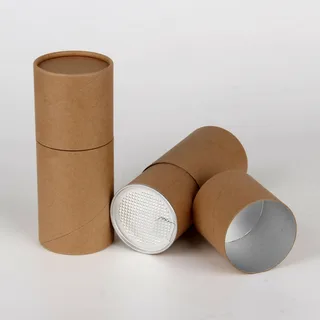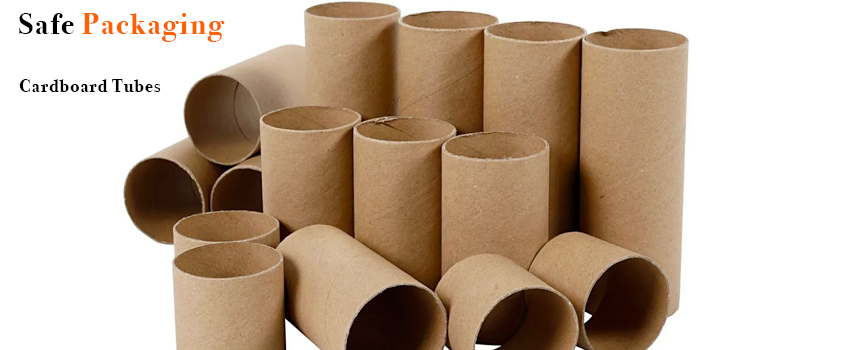Cardboard tube packaging is revolutionizing the way we store and transport products. This eco-friendly packaging solution offers versatility, durability, and sustainability. From industrial uses to consumer goods, cardboard tubes are making waves in various industries. Let’s dive into the world of cardboard tube packaging and explore its history, benefits, applications, and future trends.
History of Cardboard Tube Packaging
Early Uses
Cardboard tubes have been around for centuries, initially used for storing documents and artworks.
Evolution Over Time
Over time, cardboard tubes have evolved, finding applications in diverse sectors like food, cosmetics, and retail.
Types of Cardboard Tubes
Industrial Tubes
Industrial tubes are designed for heavy-duty applications, including shipping and construction.
Consumer Tubes
Consumer tubes are used for packaging everyday items like snacks, cosmetics, and toys.
Materials Used in Cardboard Tubes
Recycled Paper
Most cardboard tubes are made from recycled paper, making them an eco-friendly choice.
Virgin Paper
Some high-strength tubes are made from virgin paper to ensure durability and quality.
Manufacturing Process
Step-by-Step Production
- Paper is wound around a mandrel.
- Adhesives are applied to bond the layers.
- Tubes are cut to the desired length.
- Quality checks are performed to ensure standards.
Quality Control Measures
Each tube undergoes rigorous testing to meet industry standards for strength and durability.

Read the blog about Business
Applications of Cardboard Tube Packaging
Food and Beverage Industry
First of all, cardboard tubes are used for packaging snacks, beverages, and dry goods, offering a sustainable alternative to plastic.
Cosmetics and Personal Care
Similarly, cosmetics and personal care products are increasingly being package in cardboard tubes for an eco-friendly appeal.
Retail and E-commerce
Retail and e-commerce industries use cardboard tubes for shipping and packaging products, enhancing product protection.
Benefits of Cardboard Tube Packaging
Sustainability
Cardboard tubes are biodegradable and recyclable, reducing environmental impact.
Durability
These tubes offer robust protection for various products, preventing damage during transit.
Cost-Effectiveness
Cardboard tubes are cost-effective, making them a preferred choice for businesses looking to cut packaging costs.
Customization Options
Size and Shape
Cardboard tubes can be customized in various sizes and shapes to fit specific product needs.
Printing and Branding
Companies can enhance their branding by printing logos and designs on the tubes, making the packaging stand out.
Environmental Impact
Recyclability
Cardboard tubes are highly recyclable, contributing to waste reduction and resource conservation.
Biodegradability
Being biodegradable, cardboard tubes decompose naturally, minimizing landfill waste.
Challenges and Limitations
Moisture Resistance
Cardboard tubes can be susceptible to moisture, which can weaken their structure.
Strength Under Pressure
While durable, cardboard tubes may not withstand extreme pressure or heavy loads.
Innovations in Cardboard Tube Packaging
Eco-Friendly Coatings
Innovative coatings are being developed to improve moisture resistance and durability without compromising recyclability.
Smart Packaging Solutions
Smart packaging, such as embedded QR codes, is enhancing user engagement and product tracking.
Case Studies of Successful Brands
Brand A
Brand A has successfully implemented cardboard tube packaging. Reducing its carbon footprint and enhancing its brand image.
Brand B
Brand B has seen a significant increase in customer satisfaction. Loyalty by switching to eco-friendly packaging solutions.
Consumer Perceptions
Aesthetic Appeal
Consumers appreciate the aesthetic appeal of cardboard tube packaging, which often features unique designs and vibrant colors.
Eco-Conscious Choices
Along with aesthetic appeal, with growing environmental awareness, consumers prefer eco-friendly packaging options, boosting the popularity of cardboard tubes.
Future Trends in Cardboard Tube Packaging
Cardboard tube packaging is not only gaining popularity for its eco-friendly attributes but also evolving with innovative trends that enhance its functionality and appeal. Here are some key trends shaping the future of cardboard tube packaging:
1. Technological Advancements
Above all, innovations in manufacturing technology are significantly improving the quality and capabilities of cardboard tubes. Automation and precision engineering allow for more consistent production, reducing waste and enhancing the overall quality of the tubes. Additionally, advancements in materials science are leading to stronger, more durable tubes that can withstand greater pressure and environmental factors.
2. Eco-Friendly Coatings and Materials
Along with it, as sustainability remains a top priority, there is a growing trend towards using eco-friendly coatings and materials. These coatings improve the moisture resistance and durability of cardboard tubes without compromising their recyclability.
3. Smart Packaging Solutions
These technologies enhance consumer engagement by providing additional information, interactive experiences, and easy product tracking. For instance, a QR code on a cosmetic tube can lead customers to tutorials or ingredient information, adding value beyond the physical packaging.
4. Customization and Personalization
Furthermore, customization is a significant trend in the packaging industry, and cardboard tubes are no exception. Brands are leveraging the versatility of cardboard to create unique, eye-catching designs that resonate with their target audience. Personalized packaging, with options for custom shapes, sizes, and printing, helps brands stand out on the shelves and build a stronger connection with consumers.
5. Minimalist and Aesthetic Designs
Moreover, minimalism is gaining traction in packaging design, with a focus on clean lines, simple graphics, and subtle colors. Cardboard tubes lend themselves well to this trend, offering a sleek and modern look that appeals to eco-conscious consumers. This minimalist approach not only enhances the visual appeal but also aligns with the sustainable ethos by using fewer resources in production.
6. Increased Use in Various Industries
Besides, the use of cardboard tube packaging is expanding across different industries, including food and beverages, cosmetics, pharmaceuticals, and electronics. Each sector is discovering the benefits of cardboard tubes, such as improved product protection, cost savings, and environmental advantages. This diversification is driving innovation as manufacturers develop specialized solutions tailored to specific industry needs.
7. Market Growth Projections
Adding more to it, the market for cardboard tube packaging is expected to grow significantly in the coming years. Factors such as increasing environmental awareness, stringent regulations on plastic use, and consumer preference for sustainable products are driving this growth. As more companies adopt eco-friendly packaging, the demand for cardboard tubes will continue to rise, leading to further advancements and innovations in the field.
8. Enhanced Functionalities
Besides it, future trends also include the development of multi-functional cardboard tubes that serve multiple purposes. For example, tubes with compartments for different products or those that can be reused or repurposed by consumers. This trend not only adds value for customers but also aligns with the circular economy principles by extending the lifecycle of the packaging.
9. Collaboration with Eco-Conscious Brands
Additionally, collaborations between packaging manufacturers and eco-conscious brands are becoming more common. These partnerships aim to create innovative, sustainable packaging solutions that meet the specific needs of the brand while minimizing environmental impact. Such collaborations often result in unique and effective packaging designs that set new standards in the industry.
10. Consumer Awareness and Demand
Finally, increasing consumer awareness about environmental issues and the demand for sustainable products are significant trends driving the growth of cardboard tube packaging. Consumers are becoming more discerning about the packaging choices of the brands they support, and companies are responding by adopting more sustainable practices. This shift in consumer behavior is likely to continue, influencing the future direction of packaging design and materials.
In conclusion, the future of cardboard tube packaging looks promising, with numerous trends and innovations driving its evolution. As industries and consumers alike prioritize sustainability, the demand for versatile, durable, and aesthetically pleasing cardboard tube packaging will only increase, paving the way for a greener future.
Conclusion
In the end, cardboard tube packaging is a game-changer in the packaging industry. Its sustainability, versatility, and cost-effectiveness make it an ideal choice for various applications. As technology advances and consumer preferences shift towards eco-friendly options, the future of cardboard tube packaging looks promising.
Read the latest blog here
